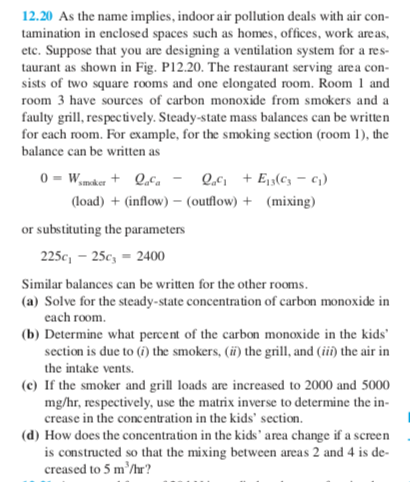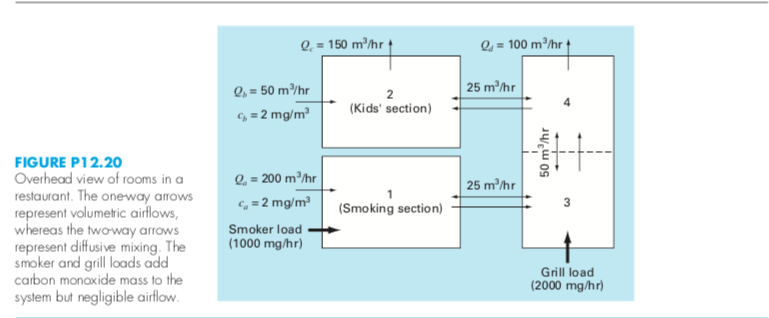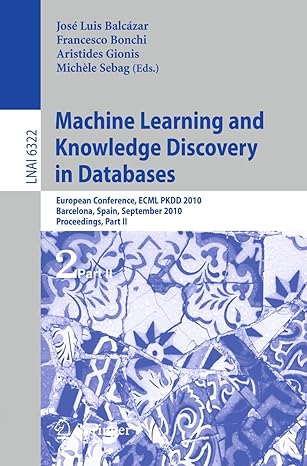Answered step by step
Verified Expert Solution
Question
1 Approved Answer
CODE IN MATLAB PLS --> For Part (a), you can cheat and use x = Ab . 12.20 As the name implies, indoor air pollution
CODE IN MATLAB PLS



--> For Part (a), you can cheat and use x = A\b .
12.20 As the name implies, indoor air pollution deals with air con- tamination in enclosed spaces such as homes, offices, work areas, etc. Suppose that you are designing a ventilation system for a res. taurant as shown in Fig. P12.20. The restaurant serving area con- sists of two square rooms and one elongated room. Room 1 and room 3 have sources of carbon monoxide from smokers and a faulty grill, respectively. Steady-state mass balances can be written for each room. For example, for the smoking section (room 1), the balance can be written as 0 - Waker + OC - Q. + Ezc; - g) (load) + (inflow) - (outflow) + (mixing) or substituting the parameters 225c) - 25c; - 2400 Similar balances can be written for the other rooms. (a) Solve for the steady-state concentration of carbon monoxide in each room. (b) Determine what percent of the carbon monoxide in the kids' section is due to (i) the smokers, (ii) the grill, and (iii) the air in the intake vents. (e) If the smoker and grill loads are increased to 2000 and 5000 mg/hr, respectively, use the matrix inverse to determine the in- crease in the concentration in the kids' section. (d) How does the concentration in the kids' area change if a screen is constructed so that the mixing between areas 2 and 4 is de creased to 5 m/hr? Q. = 150 m/hr + = 100 m/hr + 25 m/hr 0= 50 m/hrStep by Step Solution
There are 3 Steps involved in it
Step: 1

Get Instant Access to Expert-Tailored Solutions
See step-by-step solutions with expert insights and AI powered tools for academic success
Step: 2

Step: 3

Ace Your Homework with AI
Get the answers you need in no time with our AI-driven, step-by-step assistance
Get Started


